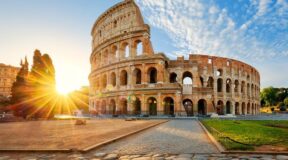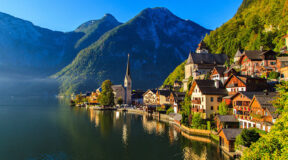Tourism in Italy is a major industry, drawing millions of visitors each year with its rich cultural heritage, historic landmarks, beautiful landscapes, and world-famous cuisine. Here’s an overview of what makes Italy a top tourist destination:
Major Tourism Highlights
Cultural and Historical Attractions
- Rome: The capital city is a treasure trove of ancient ruins, including the Colosseum, Roman Forum, and Pantheon. Vatican City, an independent enclave within Rome, attracts visitors to St. Peter's Basilica, the Vatican Museums, and the Sistine Chapel.
- Florence: Known as the cradle of the Renaissance, Florence offers the Duomo, Uffizi Gallery, Ponte Vecchio, and numerous other art and architecture landmarks.
- Venice: Famous for its canals, gondolas, St. Mark’s Basilica, the Doge’s Palace, and the vibrant Piazza San Marco.
Natural Landscapes and Coastal Beauty
- Amalfi Coast: Known for its dramatic cliffs, colorful villages like Positano and Amalfi, and scenic coastal drives.
- Cinque Terre: Five picturesque seaside villages connected by hiking trails, known for their colorful houses and stunning coastal views.
- Lake Como: A scenic lake area surrounded by mountains, with charming towns like Bellagio and Varenna.
Culinary Tourism
- Tuscany: Renowned for its wine, especially Chianti, and Tuscan cuisine, including dishes like ribollita and bistecca alla fiorentina.
- Emilia-Romagna: Famous for its culinary contributions such as Parmigiano-Reggiano, prosciutto di Parma, and traditional balsamic vinegar.
- Naples: The birthplace of pizza, particularly the Neapolitan pizza, and known for its robust culinary traditions.
Key Regions and Cities
Northern Italy
- Milan: Italy’s fashion and financial hub, home to the Duomo, La Scala opera house, and high-end shopping in the Galleria Vittorio Emanuele II.
- Veneto: Region including Venice and Verona, famous for its romantic scenery and Shakespearean connections.
Central Italy
- Tuscany: Besides Florence, this region includes Siena, Pisa, and the rolling hills of the Chianti wine region.
- Umbria: Known for its medieval hill towns like Assisi and Perugia.
Southern Italy
- Naples and the Amalfi Coast: Known for historic sites like Pompeii and Herculaneum, as well as breathtaking coastal scenery.
- Sicily: Italy’s largest island, offering a mix of Greek and Roman ruins, Baroque architecture, and Mount Etna.
Types of Tourism
Cultural and Heritage Tourism
Italy’s long history and well-preserved historical sites make it a premier destination for those interested in ancient civilizations, Renaissance art, and medieval architecture.
Gastronomic Tourism
Italy is a haven for food lovers, offering regional specialties that attract gastronomes from around the world. Wine tours and culinary classes are popular activities.
Adventure and Nature Tourism
The country’s diverse landscapes provide opportunities for hiking, skiing in the Alps, sailing along the coasts, and exploring volcanic regions like Mount Etna.
Romantic and Honeymoon Tourism
Venice, Florence, and the Amalfi Coast are particularly popular among couples looking for romantic getaways.
Tourism Infrastructure
Accommodation
Italy offers a wide range of accommodation options, from luxury hotels and historic palazzos to charming agriturismos (farm stays) and budget-friendly hostels.
Transportation
Italy has a well-developed transportation network, including high-speed trains connecting major cities, regional trains, and an extensive network of buses. Major cities also have public transportation systems like metros and trams.
Tour Services
Italy has numerous tour operators offering guided tours, from day trips to multi-day excursions, catering to a variety of interests such as art, history, food, and adventure.
Challenges and Sustainability
- Overtourism: Popular destinations like Venice, Florence, and the Amalfi Coast often face issues related to overtourism, leading to crowding and environmental strain.
- Sustainability Efforts: There are increasing efforts to promote sustainable tourism practices, such as encouraging travel to less-visited areas, supporting local economies, and preserving cultural and natural heritage sites.
Discover Attractions in Italy.
Italy remains one of the most enchanting and diverse destinations in the world, offering something for every type of traveler. Whether you’re drawn by its history, culture, food, or natural beauty, Italy promises an unforgettable experience.






